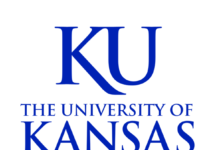When we think of game birds, the bobwhite quail is often one of the first that comes to mind. The bird is a favorite among hunters and nature watchers, alike. However, it may need assistance so we can continue to enjoy its majestic presence.
“The northern bobwhite quail is the most well known native game bird in Kansas,” said Charlie Lee, wildlife management expert for Kansas State University and K-State Research and Extension. The winter months serve as an important time for landowners to consider how to make land more quail-friendly.
The way land is managed has a direct relationship to the number of bobwhite quail, Lee said. Agricultural practices and land use affect quail habitat. When rangeland is plowed and replaced with crops or other grasses, it greatly reduces habitat and quail numbers.
Lee said he encourages rangeland owners to view a Oklahoma State University publication, “Bobwhite Quail Habitat Evaluation and Management Guide.” (http://www.okrangelandswest.okstate.edu/files/wildlife%20pdfs/E-904.pdf). It details what types of habitat quail need to survive and flourish, and outlines factors that limit quail.
Planning period
It is for land owners to understand bobwhite quail home range and carrying capacity, Lee said. In most of Kansas, quail need a home range of at least a 40- to 80-acre land tract.
He said he doubts if Kansas’ long-term carrying capacity will ever be more than one bird per acre. A covey, or group of quail, that includes roughly 8 to 12 birds, typically needs 15 to 20 acres.
“I tell folks to try to put everything that quail need every day of the year on each of those 40-acre tracts,” Lee said, including food, water, cover and space.
Special considerations
Quail require different cover at different times of the year, he said. The quantity of nesting cover is important.
“Optimum nesting cover in a grassland would be at least 30 to 40 percent,” Lee said. “That nesting cover is made of last year’s warm season grasses that were not grazed. Typically, the cover must be 6 to 8 inches tall, with some light to moderate use by livestock, to be free enough at ground level for quail to move easily.”
Lee said that brood-rearing habitat should make up at least six acres in each 40-acre patch. This habitat should produce considerable amounts of small insects, which for protein needs, make up the diet of young quail and adult females. Quail eat a variety of other foods, too, including grass seeds and crop grains.
“Food needs to be abundant,” he said. “We get abundance generally by moderate grazing, which usually yields good plant diversity with light plant litter so seeds are readily available.”
According to the OSU publication, burned areas of land tend to attract insects sooner than non-burned areas and will serve as better brooding ground. Avoid dense vegetation or heavy mulch which makes it difficult for the chicks to move around and find food.
The average covey of quail consumes about three-quarters of a pound of food per day, the publication said. At least 40 percent of the home range should be in prairie with abundant weeds, shrubs or open forest to ensure the quail have food through the winter into March.
While food and cover are important Lee said surface water is not useful for bobwhite quail. If available, they may drink, but the birds generally get water through succulent herbs, insects, dew and snow.
Protection
In addition to warm season grasses, nesting cover is needed in the form of thick, woody plants for the quail’s protection.
Woody plants, trees and shrubs make great protective cover, as they hide quail and their eggs from predators such as snakes, raccoons, foxes, coyotes and hawks. Cover must also be available in the colder months. Brush piles are only a temporary form of cover. At least 5 percent of the home range should serve as protective cover.
By following these guidelines, Lee said landowners may be able to increase bobwhite quail numbers for the long term. However, fluctuations in quail numbers are normal and largely dependent on weather during nesting and brood rearing.
More information can be found at www.okrangelandswest.okstate.edu/files/wildlife pdfs/E-904.pdf.



